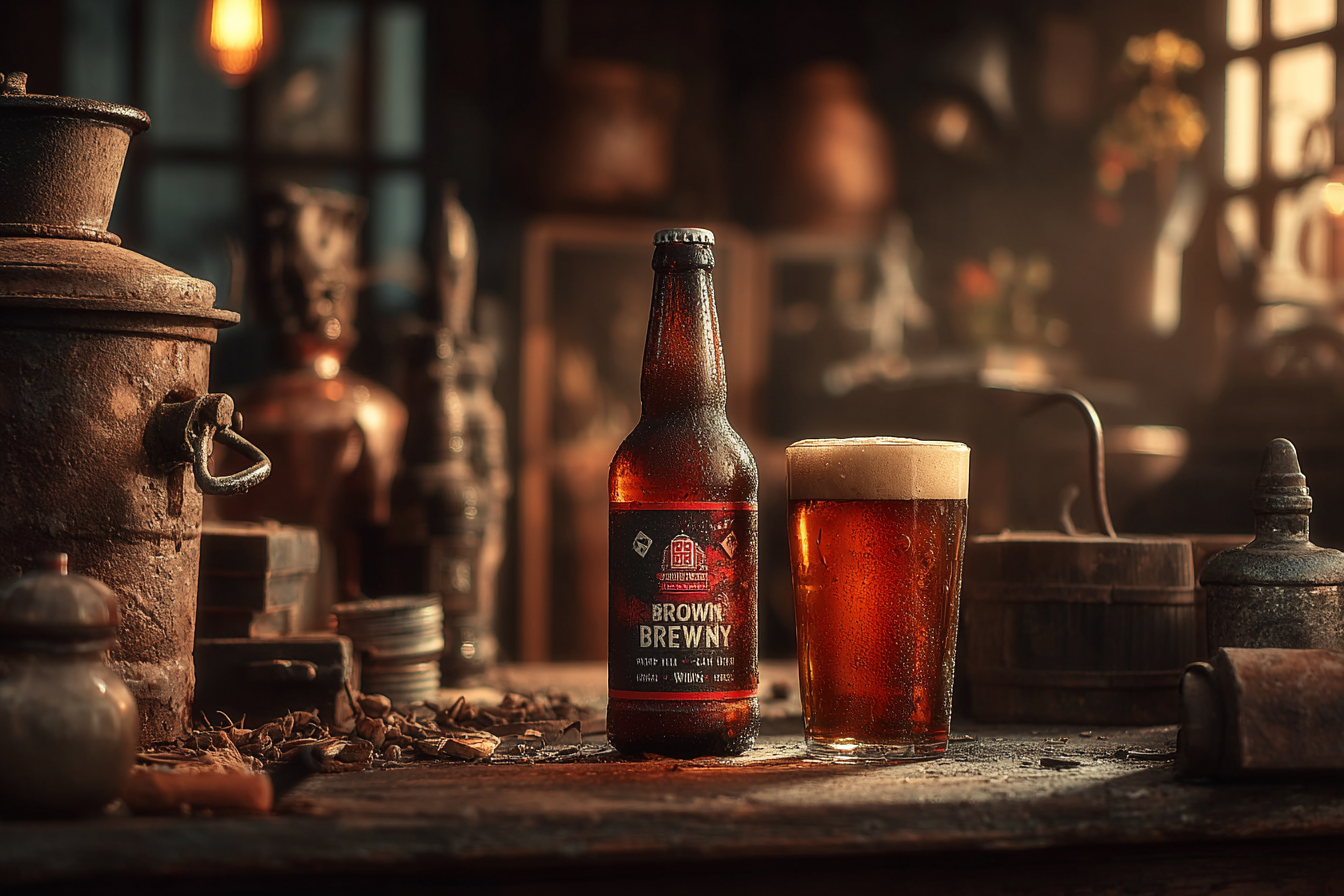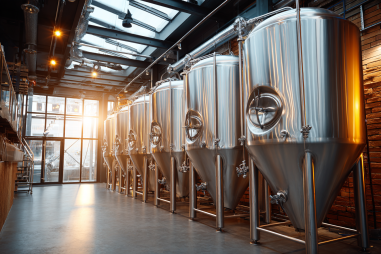American Brown Ale stands as a testament to the fusion of tradition and innovation in the craft beer world. Rooted deeply in the heritage of English brown ales, this style has been embraced and transformed by American brewers, resulting in a diverse and flavorful beer that has captivated enthusiasts across the country. From its origins to its current status in the craft beer scene, American Brown Ale offers an engaging story of adaptation, evolution, and cultural impact.
Origins of Brown Ales Globally
The history of brown ales traces back centuries, largely anchored in English brewing traditions. English brown ales emerged primarily in the industrial cities of northern England, such as Newcastle and Burton upon Trent, where brewers crafted malt-forward beers that were darker and richer than typical pale ales. These beers typically featured a balance of toasted maltiness, mild bitterness, and gentle fruit notes, making them immensely popular among working-class drinkers looking for a flavorful yet approachable brew.
The traditional English brown ale was characterized by its deep amber to brown color, relatively moderate alcohol content, and a flavor profile that veered toward caramel, toffee, and nutty notes. Unlike the robust stouts and porters, brown ales maintained a lighter body and cleaner finish, which contributed to their appeal. Over time, this style spread beyond England’s borders, becoming part of the repertoire of brewers in other countries, laying the groundwork for later adaptations.
Adaptation and Innovation in America
When the craft beer movement began sweeping through America in the late 20th century, brewers sought to both respect traditional styles and push their boundaries. American brewers adopted the brown ale style, drawn to its malt-centric character and versatility. However, rather than simply replicating the English versions, they made the style their own.
American Brown Ale gradually evolved to include a broader flavor palette and often a hoppier profile, reflecting the nation’s enthusiasm for innovative hop varieties and aromatic intensity. While English brown ales tended to be more malt-forward and restrained, American versions often showcase medium to pronounced hop bitterness and aroma, introducing piney, citrusy, or floral notes derived from American hops like Cascade, Centennial, and Chinook.
This adaptation marked a turning point—the creation of an American identity for brown ales that retained respect for tradition while embracing contemporary craft beer trends. The result was a fuller-bodied, bolder, and sometimes sweeter beer that appealed to a rapidly growing audience of craft beer drinkers.
Key Breweries That Shaped the Style
Several pioneering breweries played instrumental roles in shaping and popularizing American Brown Ale. Among these, Sierra Nevada Brewing Company stands out as a cornerstone with its version of brown ale that helped define the style for American consumers. Their beer featured a balance of malty sweetness and assertive hop bitterness, highlighting the potential for complexity within the style.
Other notable brewers like Brooklyn Brewery with their Brooklyn Brown Ale, and Rogue Ales with their seminal Hazelnut Brown Nectar, further demonstrated how diverse interpretations could thrive within this category. Rogue’s experimentation with nut additions, for example, introduced new flavor dimensions and encouraged other brewers to explore creative adjuncts in brown ales.
Smaller craft breweries nationwide continue to develop unique takes on American Brown Ale, proving that the style is both versatile and enduring. These breweries helped establish the brown ale as more than a niche offering; instead, it became a beloved symphony of malt, hops, and innovation that fits within the broader American craft beer tapestry.
Evolution of Flavor and Brewing Techniques
The flavor profile of American Brown Ale has seen significant evolution over the decades. While the core elements of caramel, chocolate, toasted malt, and nutty undertones remain consistent, brewers have experimented extensively with hop varieties and brewing techniques to create distinctive versions.
Modern American Brown Ales often feature:
- Brighter, more assertive hop character that balances sweetness with bitterness
- Use of American hop strains to add complexity and aromatic qualities
- Incorporation of specialty malts to enhance depth and mouthfeel
- Occasional adjuncts such as nuts, coffee, or slight fruit additions to diversify taste
Advances in brewing technology have also improved consistency and quality, allowing brewers to finely tune fermentation temperatures, yeast strains, and aging methods. This precision results in Brown Ales with refined flavor clarity and balanced profiles, catering to discerning palates while maintaining approachability for casual drinkers.
Impact on American Craft Beer Culture
American Brown Ale holds a significant place within the craft beer community, representing a bridge between tradition and innovation. For many drinkers, it serves as an inviting introduction to craft beer due to its moderate alcohol content, balanced flavors, and rich malt character that doesn’t overwhelm with bitterness or alcohol warmth.
Moreover, the style’s versatility makes it a go-to choice for breweries looking to showcase craftsmanship while appealing to a broad audience. Brown Ale’s presence in pubs, taprooms, and beer festivals has helped promote a greater appreciation for malt-focused beers, sometimes overshadowed by the popularity of IPAs and sours. Its reliable drinkability and flavor complexity reinforce the importance of malt in crafting balanced beers.
As part of the broader American craft beer evolution, Brown Ale embodies the spirit of creativity, respect for heritage, and community engagement that define the movement. It’s a style that continues to inspire both brewers and drinkers alike.
Modern Trends and Future Prospects
Today, American Brown Ale is as dynamic as ever. Brewers are continuing to experiment with international malt varieties, barrel aging, and novel hops to offer fresh spins on the style. Barrel-aging, especially in bourbon or oak barrels, has gained traction, lending American Brown Ales additional complexity, depth, and a subtle woody character.
There is also a renewed interest in sessionable brown ales, with lower alcohol versions catering to consumers seeking flavorful yet easy-drinking options. Moreover, hybrid styles blending Brown Ale with other beer types (such as porters or amber ales) have begun to emerge, reflecting ongoing innovation.
Looking ahead, the future of American Brown Ale seems promising. As craft beer consumers continue to seek out balanced, flavorful, and approachable beers, this style is well-positioned to thrive. Its adaptability and capacity for creative interpretation ensure that American Brown Ale will remain a beloved part of the beer landscape, delighting palates while honoring its storied past.
American Brown Ale’s journey from English roots to a distinctly American innovation underscores the broader narrative of craft beer in the United States—one where tradition meets creativity, and every sip tells a story. Whether you’re a seasoned craft beer lover or just beginning your journey, exploring an American Brown Ale offers a delicious chapter in the ever-evolving world of beer.







